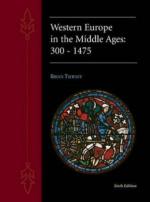|
This section contains 523 words (approx. 2 pages at 300 words per page) |

|
Court and Countryside.
Throughout the Carolingian era (eighth to tenth centuries) and the later Middle Ages, dancing was a part of all types of celebrations, both formal and informal. It could involve a solo dancer, couples, or groups of any size, and was accompanied by music that was either sung or played on instruments of all types. The dances themselves could be simple or complex, sedate or energetic, and contributed to the social life of every level of society. Dancing filled a variety of needs: it could be a way of expressing happiness, a casual relief from the toils of daily labors, an occasion for amorous flirtation, or a vehicle for displaying elegance and wealth. It took place in castles and manor houses, in town streets and squares, and in neighboring fields. Typical instances of dancing—on joyous occasions outside of churches...
|
This section contains 523 words (approx. 2 pages at 300 words per page) |

|




